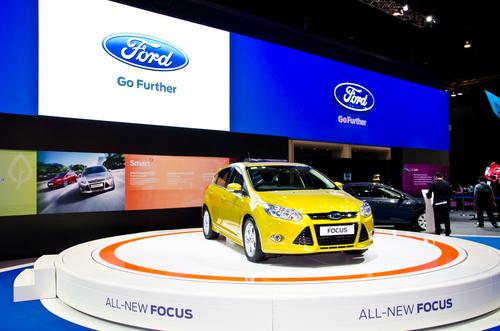Ford takes its data analytics very seriously. Dana Gardner, principal analyst at Interarbor Solutions, recently sat down with Michael Cavaretta, Technical Leader of Predictive Analytics for Ford Research and Advanced Engineering, to talk about how the car company is using Big Data analytics to refine its business processes. The discussion took place in conjunction with The Open Group Conference, which began Jan. 28 in Newport Beach, California. (
A full transcript is available at BriefingsDirect.) Cavaretta works with a team of around 30 people who act as internal consultants within Ford, looking at the best ways to integrate advanced technologies into the business. The rise of Big Data—and the ability to store datasets of pretty much any size—is having a radical effect on how he works. “A few years ago people were very much concentrated on filtering down the datasets that were being stored for long-term analysis,” he told Gardner. “There has been a big sea change with the idea that we should just store as much as we can and take advantage of that storage to improve business processes.” Ford CEO Alan Mulally has long advocated a data-driven approach to decision-making, a philosophy that’s trickled down through the various layers of management. Cavaretta and his team spend their day-to-day working “on pilot projects and working with our business customers to bring advanced analytics and big data technologies to bear against these problems,” he said. The team’s primary skillsets include statistics, engineering, and computer science. They also investigate new data-related technologies, evaluating them against Ford’s internal needs. “Those types of opportunities have been increasing in the last few years,” Cavaretta added, “and we’ve been very happy with the number of internal customers that have really been very excited about the areas of big data.”
The Rise of Sensors
Like many manufacturers, Ford is increasingly focused on the possibility of integrating sensors into its products, further augmented by wireless connections that can transfer data back to a central repository—giving engineers insight into all sorts of vehicle-related metrics, including any problems in the engine. While Cavaretta and his team have been focused on using Big Data to refine Ford’s internal processes, the rise of sensors linked to an
“Internet of things” opens the door to whole new areas of explanation. “The Ford Energi [an energy-efficient vehicle] generates about 25 gigabytes of data per hour,” he said. “So you can imagine selling couple of million vehicles in the near future with that amount of data being generated.” In addition, “there are also some interesting opportunities having to do with opening up some of these systems for third-party developers.” In theory, an enterprising data scientist or engineer could take the various datasets generated from a fleet of Ford vehicles and mash them together for insights into how vehicular systems interact with each other, as well as the surrounding environment. At what temperature and humidity do windshields start to ice? Does added weight from passengers and gear have a significantly negative effect on mileage? More vehicular sensors and data could potentially answer those questions (and many more besides). People need “to be thinking about data as an asset, rather than as a cost,” Cavaretta said. “You even have to spend some money, and it may be a little bit unsafe without really solid ROI at the beginning.” Pilot projects and proof-of-concept can help alleviate any concerns among upper management about spending more on data.
The Next Generation
Ford has very publicly demonstrated its interest in next-generation technologies. Last summer, for example,
the firm opened the Ford Silicon Valley Lab (SVL), likely hoping to leverage the expertise of tech companies in that area. The Lab’s projects rely in part on OpenXC, a software platform billed as “an API to your car,” which siphons data from a vehicle’s internal network and makes it accessible from most Android apps using an OpenXC library. In theory, that data can result “vehicle-aware” applications, connected with other services, which the driver can use with a minimum of distraction. But as with so many things, it could be some time before that research translates into something the public buys and uses on a regular basis.
Image: yencha/Shutterstock.com 

